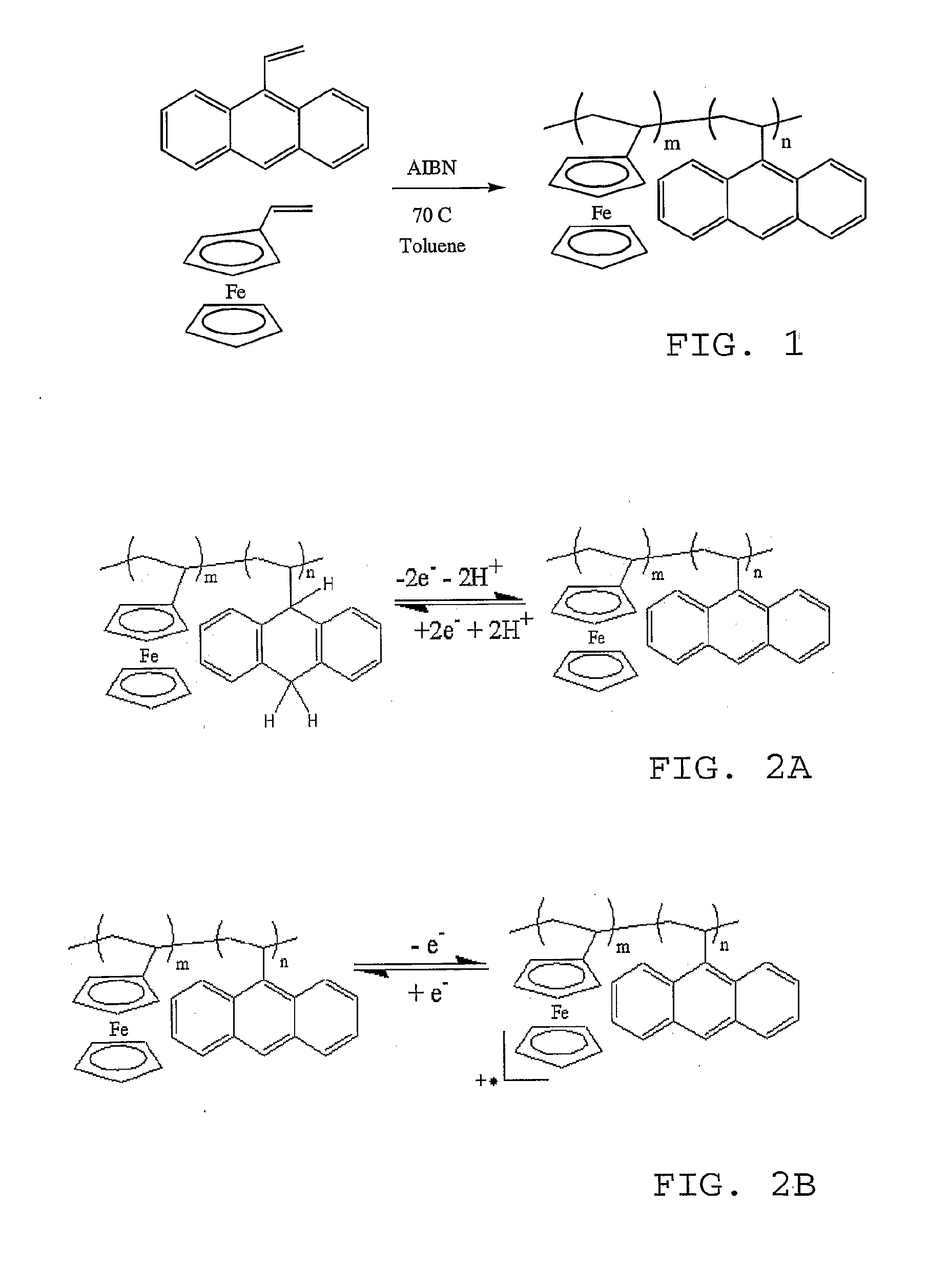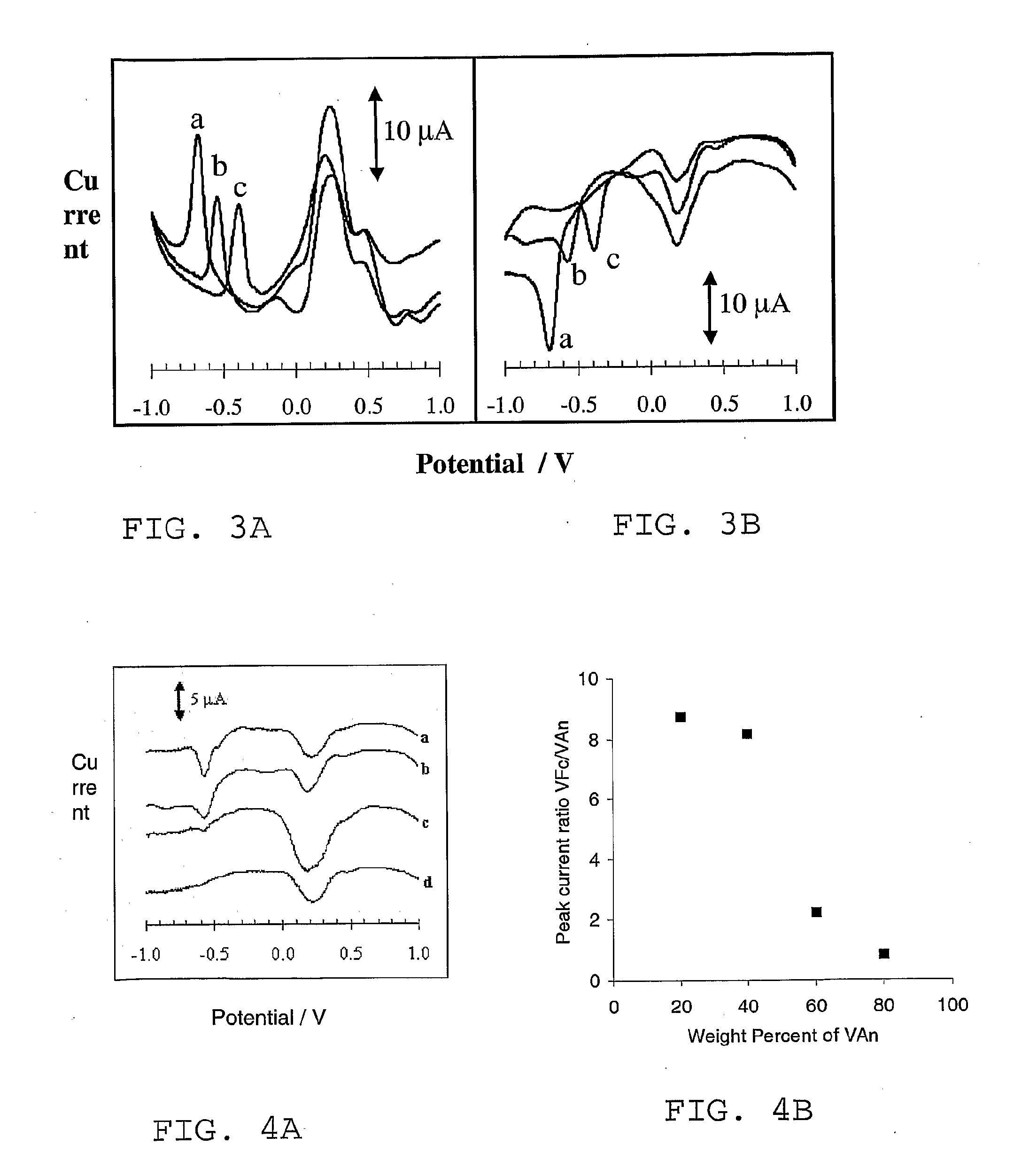Electro-chemical sensor
a sensor and electrochemical technology, applied in the field of electrochemical sensors, can solve the problems of slow polymerization, inconvenient, and constant recalibration, and achieve the effect of increasing their stability
- Summary
- Abstract
- Description
- Claims
- Application Information
AI Technical Summary
Benefits of technology
Problems solved by technology
Method used
Image
Examples
Embodiment Construction
[0054]The methods and apparatus of the present invention are based on the measurement of the electromotive force (e.m.f.) or potential E in a potentiometric cell which includes measuring and reference electrodes (half-cells). The theory of voltammetry and its application to measurements are both well developed and reference is again made to WO-2005 / 066618 A1 for further details.
[0055]The present invention is considered an improvement over WO-2005 / 066618 in that the redox system are linked to a polymeric compound. This is found to stabilize the molecules and hence increase the performance of sensors as described in WO-2005 / 066618.
[0056]Describing first the preparation of an example compound in accordance with the invention, FIG. 1 illustrates monomer units (left side) and a polymerization reaction to synthesize a vinylanthracene and vinylferrocene co-polymer as shown on the right side. The reaction conditions for the free radical copolymerizations used are: Dissolving the required am...
PUM
 Login to View More
Login to View More Abstract
Description
Claims
Application Information
 Login to View More
Login to View More - R&D
- Intellectual Property
- Life Sciences
- Materials
- Tech Scout
- Unparalleled Data Quality
- Higher Quality Content
- 60% Fewer Hallucinations
Browse by: Latest US Patents, China's latest patents, Technical Efficacy Thesaurus, Application Domain, Technology Topic, Popular Technical Reports.
© 2025 PatSnap. All rights reserved.Legal|Privacy policy|Modern Slavery Act Transparency Statement|Sitemap|About US| Contact US: help@patsnap.com



